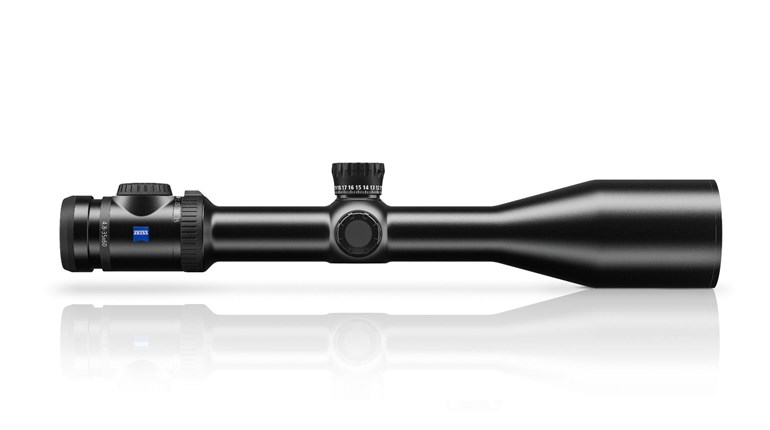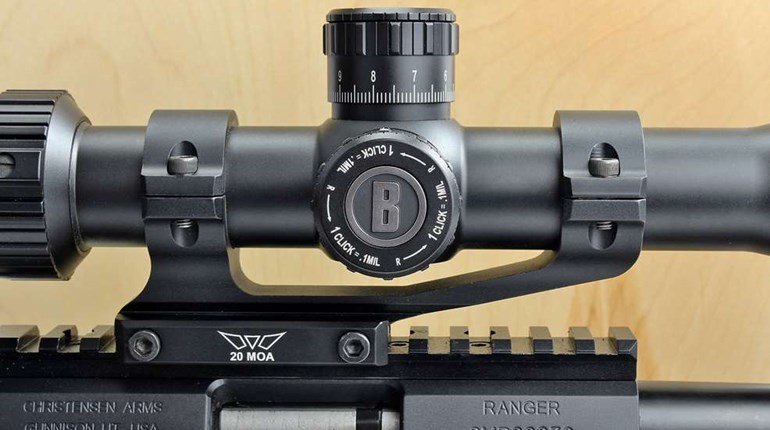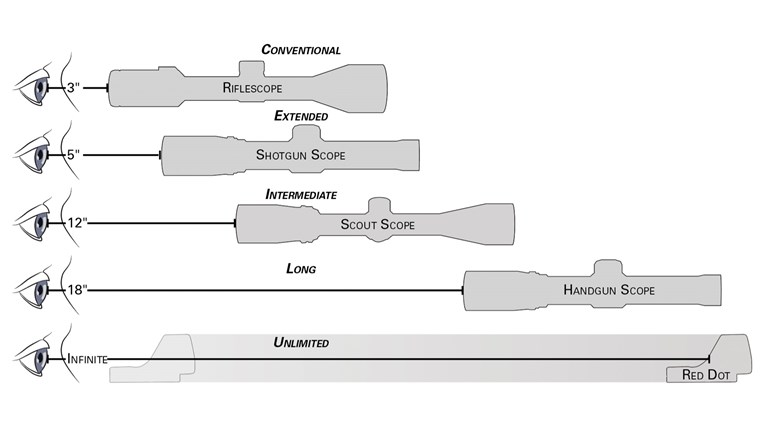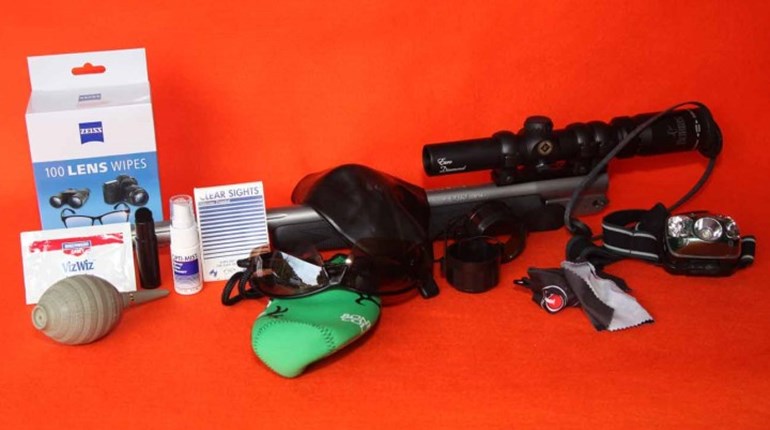
The specification sheet for nearly any riflescope made today will have a field for parallax. It will either say that parallax is adjustable and list the adjustment range (in terms of distance from something comparatively close to infinity) or note that the parallax is fixed at a particular distance, usually between 100 and 200 yards. The parallax adjustment turret is typically on the left side of the turret box, opposite of the windage turret. More often than not, it is the same knob that also has an integrated reticle illumination adjustment, commonly referred to as the “side focus”. There are some riflescopes out there that position this focus adjustment control elsewhere: on the objective (AO stands for Adjustable Objective), on the main tube right behind the objective lens, at the base of the elevation turret and on the back end of the main tube right behind the eyepiece (on a few fixed power scopes only).
The interesting thing is that calling it parallax adjustment is not, strictly speaking, accurate, since it is not the parallax that we are adjusting. It does, however, have an impact on how much parallax we see through the scope.
To get our terminology straight, let’s first define parallax as it pertains to riflescopes. Parallax is the apparent movement between the reticle and the target as you slightly move your eye laterally and vertically behind the eyepiece of the scope. Worst case parallax depends on the objective diameter of the riflescope, diameter of the eye pupil, distance to target and parallax/focus setting. There are a few online calculators out there and they are mostly accurate. A few years ago I put together a simple Excel-based calculator to check them. Most of the online resources do not take human eye pupil into account, but aside from that, they give you a very actionable calculation. There is, however, one other glaring problem: they do not consider whether the image is in focus. That gets us to what that side focus turret really does: It is there to focus the image.
Here is the diagram of the Hensoldt 4-16x56 riflescope that shows all the relevant internal optical elements.
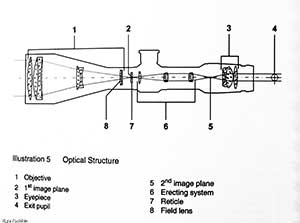
From the standpoint of the image that gets delivered to your eye with its focus and its inherent parallax, there are two focus adjustments in most riflescopes: objective lens focus and eyepiece lens focus.
The objective lens focus moves a lens group right in front of the front focal plane front-to-back shifting where the objective creates the image of whatever the riflescope is looking at. The idea is to superimpose that image as perfectly as possible onto the physical reticle that is located either in front of the erector tube (FFP reticle) or in front of the eyepiece (SFP reticle). Depending on how far away your target is, the side focus setting will be different. Sometimes the side focus turret is marked with approximate distances. Sometimes it just has general purpose reference marks. If there are numbers and they are somewhat off, that Is not an issue. What you want to do is check that the range of the objective adjustments covers the extremes: very far away and the closest listed distance.
The function of the eyepiece adjustment is to get your eye perfectly focused onto the very same physical reticle plane wherever it happens to be inside the scope. The reticle cell itself is fixed in place. It is only the lenses in the objective and the eyepiece that move when you make the adjustments.
A good way to think about it is to simply assume that the objective lens focus (side focus turret) adapts the riflescope to the world, while the eyepiece focus adapts the riflescope to you.
In order to have a sharp image and zero parallax, both of these adjustments have to be done correctly.
If the eyepiece is not properly adjusted, but the side focus is, you will have an image that is not sharp, but there will be no parallax.
If the objective and the eyepiece are adjusted to each other (that is an unfortunately common mistake), but not on the reticle, you will have a sharp image with visible parallax error.
Another complication is that for riflescopes with large depth of field, there is a broad range of settings where everything is in focus. That does not mean that there is no parallax. However, how much time you should spend trying to dial out every last bit of parallax is open to discussion. If you are trying to shoot the tightest possible group, you need it to be perfect. For most practical applications, a slight amount of parallax will not slow you down too much. It is essentially “in the noise”. Still, it is a good practice to do a quick parallax check if you have time whenever you are dialed in to the target.
Lastly, and this why we should think of the parallax turret as a focus adjustment, the perceived parallax error is exacerbated by an out of focus image. That is one of the reasons why riflescopes without any objective focus adjustment struggle at both closer and longer distances especially on high magnification. Depth of field of a riflescope is inversely proportional to magnification. If you have a 2-10x scope with fixed focus set at 150 yards, the image at 30 yards can look pretty blurry on 10x while staying nice and sharp on 2x. The theoretical worst case parallax is almost the same on both ends of the magnification range, but is practically worse on 10x because you are trying to aim at something blurry and out of focus.
Whether you need a side focus adjustment in your scope or not depends on how you use it. If most of your shooting involves preparing for a hunting season with targets from 50 yards to 400 yards, it might be options. If you are looking for precision at either extended distance or very close distance, your scope has to have objective focus adjustment and you should learn to use it properly.












